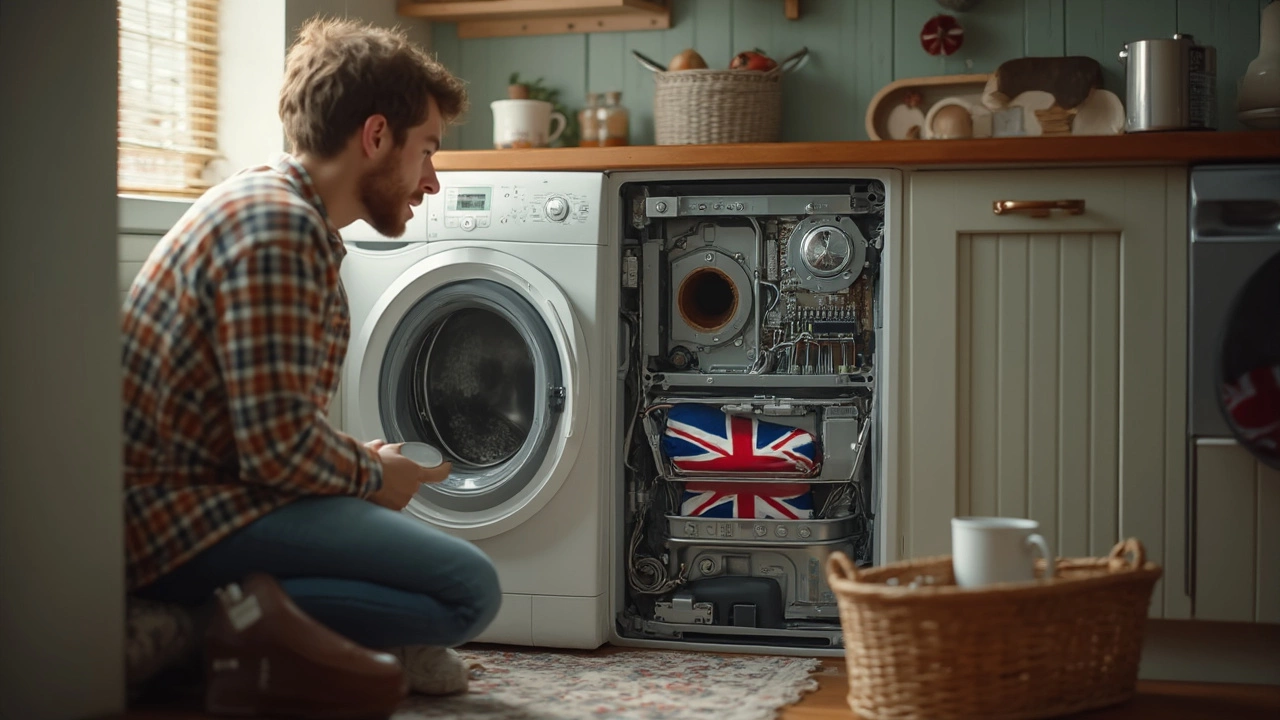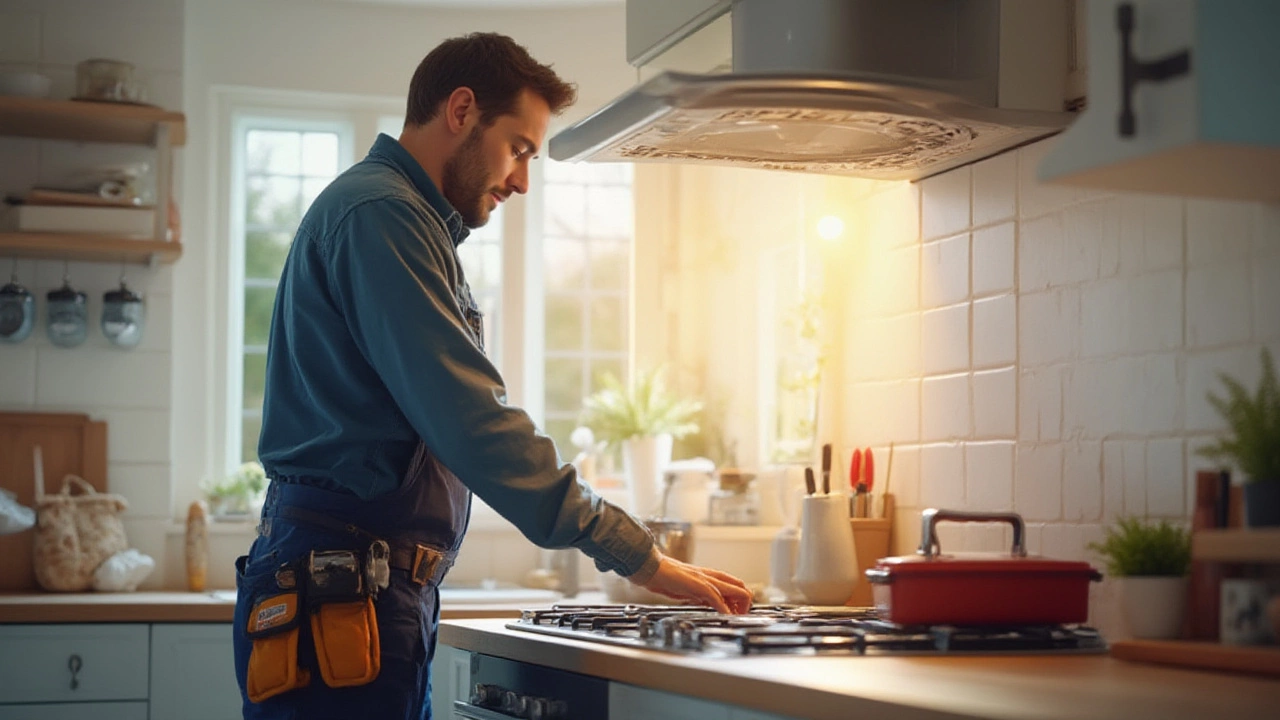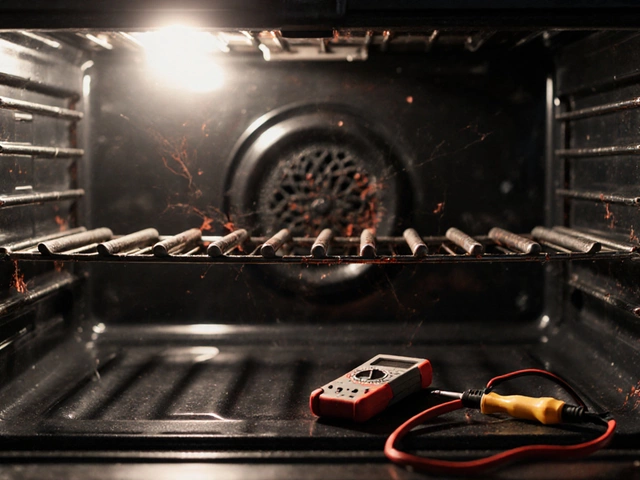Heat pumps don’t just quit all at once—usually, they come with warning signs. Maybe your house is always a little too cold or hot, no matter what you set the thermostat to. Maybe you’ve heard strange rattling in the middle of the night or noticed your power bills sneaking up even though your habits haven’t changed. These aren’t just random annoyances. They’re the heat pump’s way of telling you it’s in trouble.
Most folks want to know: is it worth fixing, or is it time to pull the plug? Skipping the guessing game saves cash and peace of mind. Start by taking a close look at how often you call for repairs. If the tech seems like a regular at your house, and you’re dropping money every few months, your heat pump might be on its way out. Few people realize that these fixes actually add up to more than just the immediate bill. That’s money you could be putting toward something new and reliable.
- Common Signs Your Heat Pump Is Toast
- When Repairs Become a Money Pit
- How Old Is Too Old?
- Efficiency Drops: The Hidden Cost
- What Breakdowns Say About the System
- Smart Moves Before Replacing
Common Signs Your Heat Pump Is Toast
If you’re starting to wonder whether your heat pump is on its last legs, there are a few classic symptoms to look out for. Most of them are hard to ignore once you know what to watch for.
- Heat pump blows air, but the air’s not as hot or cold as it used to be.
- Your electricity bill keeps going up, even though you’re not cranking the system more than usual.
- Strange noises are coming from the system—clicking, grinding, rattling, or squealing. A healthy heat pump usually runs pretty quietly.
- The system’s short cycling—basically, turning on and off a lot more than it used to. That can mean your heat pump’s struggling to keep up or something’s broken inside.
- Uneven temperatures around your home. Some rooms are warm, others are chilly, no matter how you set the thermostat.
- Frozen coils even when it’s not super cold outside. That’s a classic sign your system is straining or leaking refrigerant.
- Frequent repairs, especially if the same parts keep breaking.
Here’s a quick snapshot showing when you should start worrying based on how old your system is and what you’re dealing with:
| Issue | Red Flag |
|---|---|
| Age | More than 10-12 years |
| Rising Energy Bills | 15%+ jump year-over-year |
| Repair Frequency | More than 2-3 times in 12 months |
| Comfort Problems | Multiple rooms not holding temp |
| Loud Operation | Persistent abnormal noises |
If your heat pump’s ticking more than one of these boxes, it’s probably not something a simple fix will solve. When you start stacking up issues, the cost and hassle usually start to outweigh holding onto that old system.
When Repairs Become a Money Pit
There’s a point when fixing your heat pump isn’t the smartest choice anymore. Think about how often you’re shelling out for repairs. If you’ve called for help more than twice in the last year, you’re already in “money pit” territory. Old units tend to break down more often because their parts just wear out over time—no way around it.
Here’s a quick thing nobody tells you: if a single repair—like replacing a compressor or a coil—costs more than half of what a new unit would, you’re throwing your money away. Most experts agree that putting more than 50% of the cost of a new heat pump into repairs makes zero sense. And, on average, repair costs have jumped around 15% in the past five years as parts and labor keep getting pricier.
Want a reality check? Here’s how typical repair costs stack up, compared to what a brand-new heat pump might set you back:
| Repair Type | Average Cost (USD) |
|---|---|
| Compressor Replacement | $1,300 - $2,400 |
| Fan Motor | $300 - $600 |
| Refrigerant Recharge | $200 - $500 |
| Thermostat | $150 - $350 |
| New Heat Pump (installed) | $5,500 - $11,000 |
If your system is constantly begging for repairs and the bills are creeping up, you end up paying more for band-aid fixes than a solid solution. Toss in that most heat pumps start losing efficiency big time after about 10 years, and it’s easy to see why pouring money into repeats isn’t practical. Always add up your yearly repair and running costs; if you’re nearing the price of a replacement every year or two, it’s just not worth it.
- Don’t ignore the age of your pump—it’s a huge factor in repair costs.
- Compare your latest repair bill to the price of a new unit.
- Watch for repeated breakdowns of the same part—it usually means something bigger is wrong.
Cut your losses before your home comfort—and wallet—really take a hit.
How Old Is Too Old?
Let’s talk straight: age matters when it comes to your heat pump. These units just aren’t designed to last forever. The average heat pump in the U.S. will usually tick along for about 10 to 15 years, give or take. Some can squeeze past the 15-year mark if you’ve doted on them with regular maintenance, but pushing beyond that gets risky. Stuff starts to wear out, and reliability takes a nosedive.
Manufacturers put it out there pretty clearly—most give warranties that last around 10 years. After that, any major repair might not be covered, and you’re footing the whole bill. The Department of Energy has data showing that after about a decade, performance and efficiency start to tank. Here’s a little cheat sheet that breaks it down:
| Heat Pump Age | Typical Condition | Chance of Needing Major Repairs |
|---|---|---|
| Under 5 Years | Like new, covered by warranty | Low |
| 6–10 Years | Needs occasional tune-ups | Medium |
| 11–15 Years | Efficiency dropping, repairs rising | High |
| 16+ Years | Outdated, frequent breakdowns | Very High |
If your heat pump is older than your favorite pair of sneakers, check its serial number sticker. Anything creeping past a dozen years old should be on your radar. If it’s still running but having other issues—like making weird noises or struggling to hold a set temp—it’s not just old, it’s likely on borrowed time.
Here’s a quick way to figure out the cost-effectiveness of keeping your old unit versus getting a new one:
- If repair bills last year were more than half the cost of a new system, replacement is usually smarter.
- Older units (over 12 years) are often way less energy-efficient, so you’re paying more each month.
The best move? Don’t wait for a total breakdown. Once your system is anywhere north of 12–15 years and giving you headaches, start budgeting for a replacement. Waiting usually means getting hit with a big bill at the worst time—like the day before a freezing cold snap.

Efficiency Drops: The Hidden Cost
When your heat pump starts losing its edge, it's not just comfort you're sacrificing—it’s your wallet, too. An old or struggling unit uses way more energy than a healthy one, often without you even noticing at first. Those slow, creeping rises in your monthly electric bill add up way faster than most people think.
A lot of heat pumps are supposed to run at 200-300% efficiency, meaning for every unit of electricity they use, they move two to three units of heat into or out of your house. When efficiency drops because of age, bad maintenance, or worn-out parts, you might be close to 1:1—just like a cheap space heater. That’s a big downgrade.
Check out how this can hit your pocket:
| Heat Pump Age | Average Efficiency (%) | Estimated Annual Cost (USD) |
|---|---|---|
| 0-5 years | 300% | $600 |
| 6-10 years | 220% | $850 |
| 11+ years | 150% | $1,250 |
That means an older heat pump could cost you double what a new one would, just in electricity. Those numbers are based on usual Midwest winters, but the pattern holds anywhere: less efficiency = higher bills.
If you’re Googling “why is my heat pump running all the time?” or constantly tweaking the settings to get the same results, that’s another sure sign your heat pump isn’t what it used to be. You’re basically paying extra each month and not getting the comfort you expect.
Tips to spot poor efficiency before your bills go wild:
- Track your energy bills month to month—big jumps mean trouble.
- Listen for long run times or frequent cycles. That’s a red flag.
- If you have a smart thermostat, check the reports for unusual spikes.
Paying attention now saves a ton in the long run because you catch the hidden costs before they really sting. Sometimes the simplest fix is saying goodbye to the old system altogether.
What Breakdowns Say About the System
Every time your heat pump breaks down, it’s basically waving a little red flag. Not every repair is a big deal, but patterns matter. If you’re calling a technician more than once a year, or for the same problem over and over, your system is telling you something’s off. Recurring issues like refrigerant leaks, frozen coils, or electrical hiccups hint that internal parts are worn out, not just suffering from a “bad day.”
One clear sign is when you notice a mix of problems cropping up—like thermostat issues plus weird noises, and the air flow is all over the place. This usually means multiple core components are on their last legs. Most heat pumps don’t start to fall apart all at once unless they’re at the end of their usable life.
Here’s a quick look at the most common repeated breakdowns and what they typically mean for your heat pump:
- Compressor failures: The compressor is the heart of the heat pump. Multiple failures mean a costly fix, and replacement is usually a smarter call.
- Refrigerant leaks: Leaks that keep coming back signal old pipes or corrosion. If topping up refrigerant becomes routine, the whole unit might need replacing.
- Short-cycling: This is when your pump turns on and off a lot. It often costs more to fix than the repair is worth, especially if it keeps happening.
- Unusual noises: Bangs, rattles, or grinding point to worn-out motors, bearings, or fan blades—stuff that signals bigger system worries.
- Poor heating or cooling: If you’re just not getting the temperature you want, that’s a warning the system’s not doing its job anymore.
If these issues start overlapping, it's time to pause and do the math. According to Energy Star, if your heat pump is over 10 years old and you’re facing a repair bill that’s more than half the price of a new one, replacement usually saves you money long-term. Check out some repair facts and average costs from recent industry data:
| Breakdown Type | Average Repair Cost (USD) | Recurring Risk |
|---|---|---|
| Compressor Failure | 1,500 - 2,500 | High after initial repair |
| Refrigerant Leak | 200 - 1,500 | Moderate to High |
| Blower Motor | 400 - 700 | Moderate |
| Electrical Failure | 150 - 500 | Low to Moderate |
If you see those repair tickets piling up and your system is more than a decade old, you’re not just paying for repairs—you’re paying for the privilege of breakdowns. That’s when you know the system isn’t just acting up, it’s done for.
Smart Moves Before Replacing
Before you jump into tossing out your old heat pump, take a step back and look at a few things that could save you time and money. Swapping a unit isn’t cheap, and a bit of prep work can make a big difference in what you spend—now and down the road.
First, grab your heat pump's make, model, and serial number. Once you have that, call the manufacturer or search their website to check if your system is still under any warranty. Some parts can carry a 10-year warranty, and you’d be surprised how many people miss out on free repairs just because they never checked. If your warranty is still in play, repairs could cost way less or even nothing.
Next, you really want to get a professional opinion. Schedule an HVAC tech to come out and give your system a once-over. A trustworthy tech can spot issues that you might miss, like refrigerant leaks or worn-out electrical parts. Ask straight up whether your heat pump has a shot at a few more good years with some repairs, or if you’re just throwing cash at a dying machine.
- Always ask for repair estimates in writing. This way, you can compare the repair cost to the replacement cost and see what actually makes sense.
- Make sure to look at your power bills from the last two or three years. Sudden jumps usually mean your heat pump is becoming less efficient. That wasted energy costs more than most folks realize.
- Before replacing, check your home's insulation and ductwork. Sometimes the problem isn’t the heat pump at all—just leaky ducts, poorly sealed doors, or thin attic insulation. Fixing these can boost comfort and cut energy use, no matter which system you have.
A new heat pump can run you anywhere from $5,000 to $12,000 (including installation) depending on the size and type. Here’s a quick view of the usual numbers:
| Action | Average Cost |
|---|---|
| Standard Repair | $300 - $900 |
| Major Part Replacement (Compressor, Coil, etc.) | $1,000 - $2,500 |
| Full Replacement (including install) | $5,000 - $12,000 |
One last thing—if you have an older system that uses R-22 refrigerant (often called Freon), replacement might make even more sense. R-22 was phased out in the U.S. in 2020, and any top-ups now cost a fortune, if you can even find the stuff. Upgrading to a new system sets you up for lower repair costs and better efficiency over the long haul.





